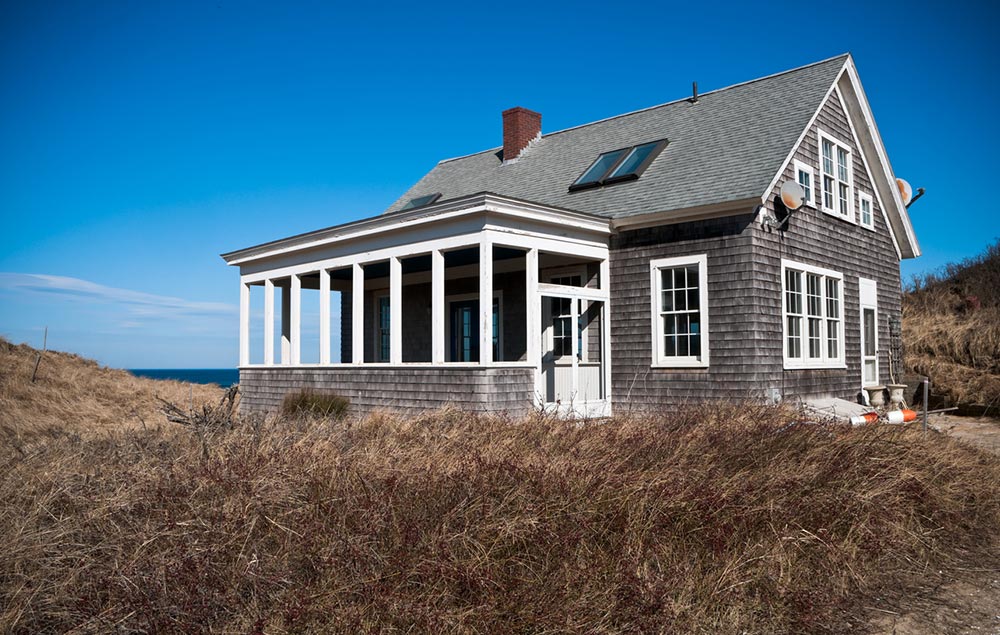6 Steps to Protecting Your Vacation Home From Taxes & Battling Heirs
If you’re like most owners of a vacation home, you view that property as a treasure — a family heirloom to be passed from one generation to the next. That may be your intent; but without forethought and a carefully executed plan, your goal could be undermined by lack of planning, estate taxation and/or infighting among the heirs. The good news is that there are six steps you can take today to ensure your heirs enjoy your vacation home long after you’re gone:
- Fully Understand Estate Tax Implications
- Get on the Same Page
- Ask and Learn
- Force a Conversation Not a Sale
- Evaluate the Various Estate Planning Options
- Make the Most of the Opportunity
STEP #1: Fully Understand Estate Tax Implications
Many second homes are mortgage-free and represent a substantial portion of the estate that will be passed on to heirs. Because of that, it’s important to understand the impact of federal and state estate taxes:
- Under current law, the federal estate tax rate is a flat 40%, but every individual has a $5.49 million “exemption.” This means you can pass along $5.49 million in assets and property to your heirs without incurring any federal tax. The exemption amount is adjusted annually for inflation.
- Married couples can share their exemption and bequeath a federal tax-free inheritance up $10.98 million.
- The 40% tax is charged on any amount over the exemption. For example, an estate of $6.49 million would be assessed a 40% tax on the $1 million over the exemption and have to pay $400,000 to the IRS.
- As of 2017, fifteen states assessed their own estate tax and six others have an “inheritance’ tax” — often at a threshold much lower than the federal exemption. For instance, Massachusetts assesses an estate tax on assets over $1 million. The highest bracket for taxable estates in Massachusetts is currently 16%.
STEP #2: Get on the Same Page
Perhaps the most critical issue is ensuring that owners-spouses are in agreement on how best to bequeath the property. Key questions include:
- Do the heirs (some or all) have sufficient resources to pay the ongoing expenses of the property (annual taxes, maintenance, and repairs)? This issue is the most common reason heirs are forced to sell inherited property. By implementing and coordinating your financial planning with your estate and heirloom property planning, you can create a dedicated pool of assets (whether through the use of a life insurance policy or simple gifts) to ensure that there is a sufficient pool of assets available to cover the ongoing costs associated with keeping the property in the family.
- Should arrangements be made to pay inheritance taxes or the property’s ongoing expenses? Doing so will provide additional financial security for the heirs and promote family harmony.
- Should the property be included in a trust to prevent distribution outside of the bloodline due to divorce, debt collection, or disability?
STEP #3: Ask and Learn
Everyone is different. As much as the owners may love their vacation home and assume their children feel the same, that may not be the case.
- Speak privately with each of the adult heirs to learn their expectations, desires and concerns. What you hear may mitigate or exacerbate some or all of your concerns (e.g., some may be totally committed, while others some may prefer a cash inheritance, some may live too far away to enjoy the property, some may not be able to afford their share of ongoing expenses, etc.).
- In the case of a second marriage for one or both partners, should the property be owned jointly (with rights of survivorship) or individually?
- Identify and address any unresolved emotional issues regarding the property. The fallout of a failed marriage can last many years and fester below the surface. It’s best to address these issues upfront rather than leave them to the heirs to resolve.
- If there are stepchildren, a whole new set of issues come into play driven by the natural desire to provide for biological children first (a desire that does not suggest a lack of concern for stepchildren).
- If there are substantial age differences between the various heirs (which is common in second marriages), special planning might be required to protect the interests of the younger heirs.
STEP #4: Force a Conversation Not a Sale
Even in the most harmonious families, conflicts regarding inherited property may fester and boil over among siblings — especially when the parents are no longer around to referee and mediate disputes. Usually this discord takes the form of shouting matches and name-calling, but it can also progress to legal action.
One lesser known legal problem is that any co-owner of a property can force its sale. Most jointly owned property has a “tenancy-in-common” title. That means any joint owner can ask the court to partition the property. The court generally has two options:
- A partition-in-kind physically divides the property into shares of proportional value and gives each co-owner full ownership of an individual share.
- If the court determines it’s impossible to physically divide the property equitably, it could order a “partition-by-sale” and sell the property as a single parcel, distributing the cash proceeds to the co-tenants in proportion to their ownership.
It’s important to note that forced sales are the worst possible outcome as they tend to generate below-market prices and create permanent family discord.
STEP #5: Evaluate the Various Estate Planning Options
The most critical consideration in leaving your valuable home to heirs is the ownership arrangement that the heirs will abide by. All successful arrangements will include some variation of “AUGUST” ownership terms, outlined here:
- Agreement on who the owners are and in what proportions; a common
- Understanding of the purpose of the property for the family; a means of
- Governance going forward; provisions on
- Use of the property;
- Stewardship responsibilities; and terms for
- Transferring ownership in the future.
- These terms (which spell out AUGUST) are the constitution and bylaws for the family’s working together on this property into the future.
- The most common way to pass on shares in a second home to the next generation is via a trust, such as these that are designed for ease of inheriting, asset protection and tax savings: Qualified Personal Residence Trusts (QPRT), Spousal Lifetime Access Trusts (SLAT), Lifetime Spousal Gift (QTIP) Trusts, Children’s Gift Trusts, and plain vanilla Revocable Trusts. .
- Establishing a limited liability company (LLC) that would own the property is a common way to begin transferring ownership while you are still alive. Instead of directly transferring the home to your children, you would give them shares in the LLC, subject to an Operating Agreement that covers the AUGUST ownership terms
- All structures should result ultimately in an “AUGUST” agreement for a harmonious, organized means of common ownership in the heirs.*
The pros and cons of the various approaches are nuanced and complicated. An estate planning attorney well-versed in trust, property and heirloom property issues can help you choose the arrangement that’s most advantageous for your situation.
STEP #6: Make the Most of the Opportunity
You have one chance and one chance only to craft a plan that will bring your vision to fruition and eliminate family conflict. Every situation is unique. The trust and LLC options should be customized to your circumstances. But don’t forget to prepare for funding the arrangement. This is part of the Stewardship discussed above. The financial freedom you can provide with life insurance or other creative financing of the future ownership is the icing on the cake for your trust or LLC.
While trusts and life insurance can be complicated , experienced legal and financial advisors can go a long way to explain the various options and simplify the process. You may want to seek out professionals who are already well-versed in this specialized planning area.
_________
* Attorney Tim Borchers’ trademark Heirloom Ownership Trust™ provides the means for harmonious common ownership. The “HOT Trust” can be either revocable (by current owners) or irrevocable. It can be part of current ownership or only arise after the current owners have died, as a follow-on to bind the next generation.



